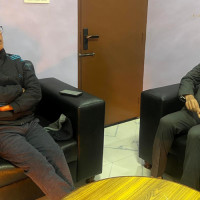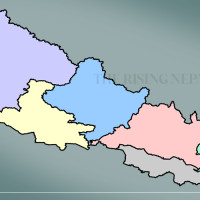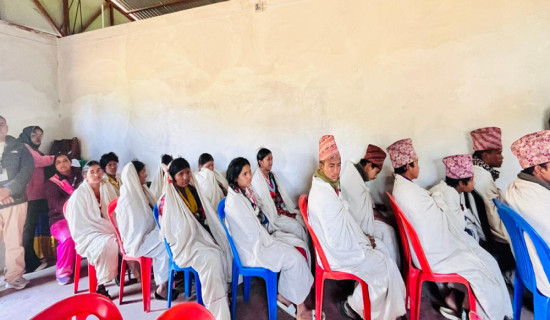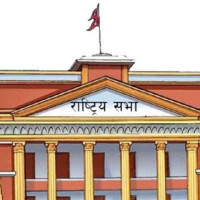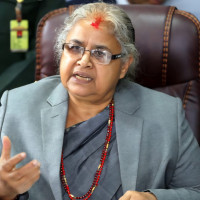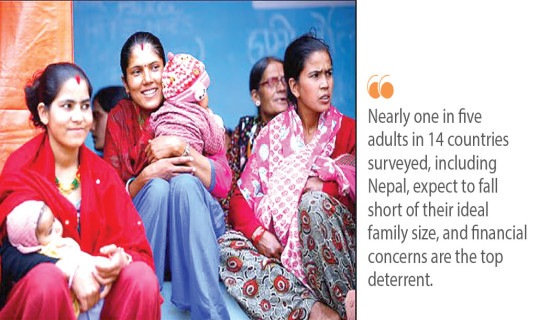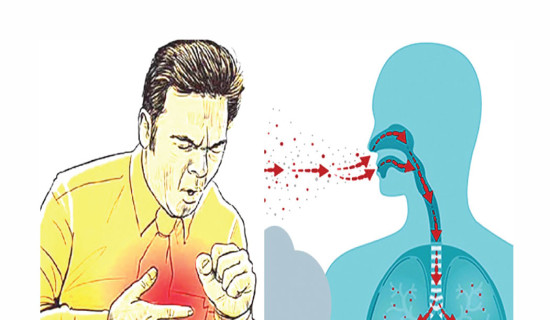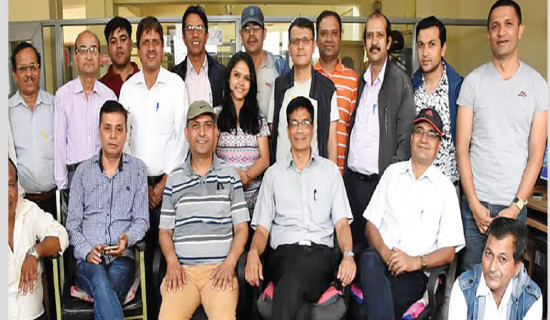- Wednesday, 7 January 2026
Move to construct basic hospitals at local levels in limbo
Kathmandu, Mar. 12: While there is extensive discourse about the revolution of health care system in Nepal, many people are still left untreated due to the lack of affordable and accessible basic health facilities. They are compelled to seek alternative destinations, with much hardship and added financial burden.
The constitution of Nepal secures individual’s rights to free basic health services, emergency health services and access to information about health and guarantees health as a fundamental right. For ensuring constitutional rights in reality, every individual needs accessible health care services.
With the aim of providing accessible health care services to all, the federal government had undertaken a major initiative to revamp the public health sector with a pledge to build and upgrade the standard of hundreds of health care centers as hospitals across the nation.
As a groundbreaking move, the government laid the foundation stones of 396 local level hospitals in November 2020, amidst the COVID-19 crisis.
However, the construction of many hospitals is yet to begin. According to the Ministry of Health and Population (MoHP), many local units have reported that lack of suitable land plots and delay in preparation of Detailed Project Report (DPR) behind the project’s inability to gain momentum.
Lack of land, contractor delay to blame
Dr. Krishna Prasad Poudel, chief of Policy Planning and Monitoring Division of MoHP, said that some local governments were unable to lay their hospital foundations due to the locals’ conflicting views on construction sites while some have not completed the construction work due to the negligence of contractors.
“We have already provided the required assistance for the construction of basic hospitals in local units across the nation but many of them have not gained momentum due to various reasons,” said Dr. Poudel.
The construction of hospitals was initiated as per the government’s policies and programmes of the fiscal year 2020/21 which envisaged that it would build 5- to 15-bed basic hospitals at all the local levels.
As per the plan, 12 health workers including one medical officer will be recruited in a five-bed hospital, 17 health workers with two medical officers in a 10-bed hospital, and 27 health workers with three medical officers in a 15-bed hospital.
The government aims to provide quality basic health services from all hospitals. The hospital will provide services including basic treatment, gynecology, pediatrics and general surgery services, among others.
The then government had allocated Rs. 80 million for building 5-bed hospital, Rs. 110 million for 10-bed and Rs. 180 million for 15-bed hospital. Of the 753 local units in the country, 655 local units are upgrading the standard of primary health care centres and constructing hospital buildings.
Talking to The Rising Nepal about the latest update of the hospital buildings, Binod Aryal, officer of Basic Health Unit at the MoHP, said that among 396 hospitals to be built in the first phase, 329 hospitals have prepared DPR, 327 have already issued tender, 307 have already made agreement with the contractors and received the budget from the MoHP for the construction.
Similarly, in the second phase, 259 hospitals were to be built, of which 184 are in the process of DPR, 130 have their DPR approved and 107 hospitals have received budget from the federal government, said Aryal.
The hospital building campaign would help the health sector take a big leap. However, very few hospitals have completed the construction work and they still need infrastructure and required manpower to operate and deliver the services.
Talking to The Rising Nepal, Yagya Prasad Dhakal, mayor of Kamalbazar Municipality of Achham district, said that the construction of basic hospital in the municipality remains incomplete due to the negligence of the contractor.
The contractor has started the construction of the hospital building. The payment was made accordingly, but the construction work has stopped. “We have also written to start work immediately but have not heard from the contractor.”
The municipality is in the process of finding legal opening to break the contract with the contractor who failed to complete the construction work, added Dhakal. Similarly, Govinda Ghimire, chief of health section at Pyuthan Municipality of Pyuthan district, said that although the building is ready, it lacks infrastructure as per the standard of basic hospital.
The federal government has the jurisdiction of setting national level targets and criteria while it is the responsibility of the local government to deliver basic health care services, said Dr. Poudel and added that the local level should take the responsibility to manage infrastructure and manpower.
Challenges
Health experts, continue to underscore the need for developing a plan for arranging infrastructure and manpower simultaneously when building hospitals. The integrated components including human resources, modern infrastructure and equipment are essential to run the basic hospitals, said Dr. Subash Pyakurel, founder of the Health Concern Nepal.
Only hospital building won’t bring revolution in health sector and provide the accessible health care services to all, it also requires technical human resource and equipment, said Dr. Pyakurel.
A big initiative like building hundreds of basic hospitals at the same phase without piloting is definitely a matter of uncertainty. “We are still confused, when and how the project will complete and how it will be operated,” said Dr. Pyakurel.
It is estimated that currently around 80 per cent of the health services across the nation are provided by private hospitals, and only 20 per cent being covered by the government hospitals.
There are no healthcare workers in various places of remote parts of the country as nobody wants to serve there due to low pay and geographical barriers.
The World Health Organisation recommends a doctor-patient ratio of 1:1,000; while it is 1:850 in Kathmandu Valley, the rate is 1:150,000 in the rural areas. A recent report shows that around 20 per cent of staff positions in the government health facilities are not filled in Nepal.
According to Nepal Medical Association, there are 32,218 registered doctors in Nepal. As per the data provided by the Nepal Nursing Council, there are 72,550 registered nurses in the country. Of them, only around 15,000 have been serving in government health facilities.
Various strategies can be adopted to attract the health service providers at the local level. For example, some of the local governments have started producing doctors by providing them scholarship for MBBS study who are obliged to serve for five years in the respective municipality after completing their course.
The concerned authorities should ensure the improvements of the health sector, including the construction of basic hospitals, with state-of-the-art health infrastructure, related equipment, and the recruitment of sufficient human resources, stressed Dr. Pyakurel.



-original-thumb.jpg)
